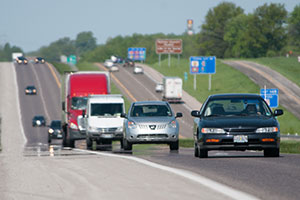Traffic Deaths Jumped in 2015 by Biggest Percentage in Almost 50 Years

After dropping by 25% from 2005 to 2014, traffic fatalities in the United States rose 7.7% last year, according to preliminary data released by the National Highway Traffic Safety Administration. Fatal crashes involving large trucks were up 4%.
The increase from 32,675 motor vehicle traffic deaths in 2014 to an estimated 35,200 in 2015 was the largest since 1966. What’s more, NHTSA’s data showed that such deaths were up in nine of 10 regions across the country.
“As the economy has improved and gas prices have fallen, more Americans are driving more miles,” NHTSA Administrator Mark Rosekind said in an agency press release. “But that only explains part of the increase. Ninety-four percent of crashes can be tied back to a human choice or error, so we know we need to focus our efforts on improving human behavior while promoting vehicle technology that not only protects people in crashes but helps prevent crashes in the first place.”
In that same release, NHTSA said it’s working to develop tools that could improve such behavioral challenges as drunk, drugged, distracted and drowsy driving; speeding; failure to use such safety features as seat belts and child seats; and initiatives to protect pedestrians and cyclists. Fatalities for the latter two groups rose an estimated 10% and 13%, respectively, in 2015.
“These sad fatality statistics … should be a call to action for NHTSA as well as all of us that work to reduce the needless carnage on America’s roads,” said Henry Jasny, Vice President and General Counsel of the Advocates for Highway and Auto Safety. “The nearly 8% increase in fatalities wipes away all of the positive reductions in highway deaths in recent years and represents a return to the grim totals experienced in the pre-recession era prior to 2008. Most telling is the fact that the fatality rate increase, of 7.7%, outpaced the 3.5% increase in vehicle miles traveled (VMT) in 2015. NHTSA and FMCSA are overdue on several critical rulemakings that have the potential to reduce fatal crashes including regulations on speed limiters for heavy vehicles and rear-seat belt reminders for passenger automobiles. Obviously, these safety advances are needed now more than ever.”
“I’m disappointed and frustrated as I expect all who work for improved road safety must be,” said Steve Owings, president of Road Safe America. “It seems that with cheap gas and more people driving without commensurate increases in lane miles, we have a dangerous situation. The ever-increasing use of digital communications devices while driving is undoubtedly exacerbating the situation.”
“Every American should be able to drive, ride or walk to their destination safely, every time,” U.S. Transportation Secretary Anthony Foxx said in a statement. “We are analyzing the data to determine what factors contributed to the increase in fatalities and, at the same time, we are aggressively testing new safety technologies, new ways to improve driver behavior and new ways to analyze the data … as we work with the entire road safety community to take this challenge head-on.”

